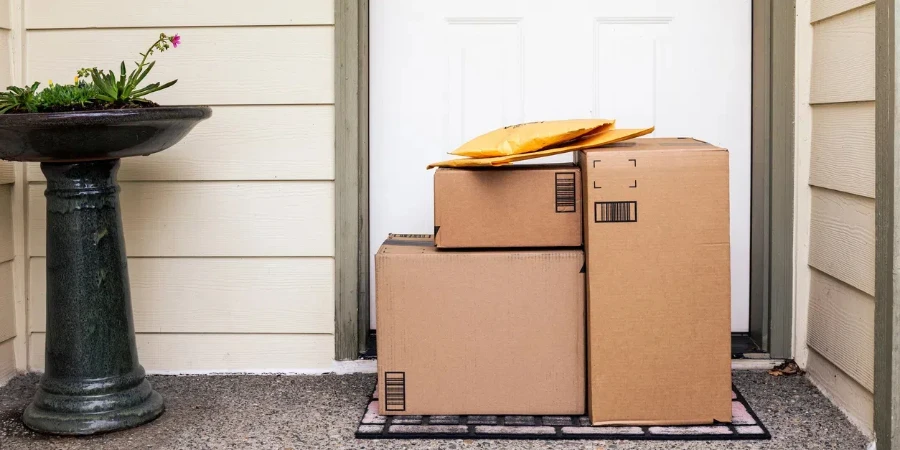James Palfrey-Smith of ASC Cartons shows how thoughtful packaging design shapes e-commerce brand loyalty and customer experience.

In the e-commerce sector, where brands vie for attention in a digital space, packaging often serves as the first physical touchpoint between the brand and the customer. Thoughtful packaging design has the potential to influence customer perceptions, convey brand values, and foster loyalty.
For e-commerce businesses, packaging is not simply a means to deliver products safely; it is a powerful tool for building brand identity and creating memorable experiences. Here, ASC explores the elements of effective packaging design and how it can help e-commerce brands differentiate themselves and cultivate lasting customer relationships.
Why packaging design matters in e-commerce
In traditional retail, shoppers encounter products on store shelves, where brands can employ various sensory elements to engage customers. In contrast, e-commerce limits the physical interaction to the product and its packaging. As a result, packaging takes on a significant role in shaping the customer’s experience and perception of the brand.
First impressions and brand consistency
Packaging provides the first tangible experience of the brand, and first impressions matter. Well-designed packaging sets the tone for what customers can expect and helps establish brand consistency. A cohesive design, which includes the use of colours, logos, fonts and overall aesthetic, reinforces the brand’s online presence. When packaging aligns with the look and feel of the website, social media and other brand elements, it creates a sense of familiarity and reliability.
Consider a brand that uses a minimalist aesthetic online. If the product arrives in packaging that reflects this simplicity, with clean lines, subtle colours, and minimal text, the experience feels harmonious and intentional. However, if the packaging is over-the-top or inconsistent with the brand’s online presence, it can feel disjointed, potentially undermining customer trust.
Creating an emotional connection
Packaging has the potential to evoke an emotional response, which can lead to positive associations and increased loyalty. For instance, personalised elements like a handwritten ‘thank you’ note or a message on the box that addresses the customer directly can make them feel valued and appreciated. When customers feel that a brand has put thought into the details, they are more likely to form a connection that goes beyond the transaction.
Key elements of effective packaging design for e-commerce
The elements of packaging design extend beyond aesthetics to include functionality and customer experience. By balancing these elements, e-commerce brands can create a comprehensive design that reflects their brand values and resonates with customers.
Visual appeal
In e-commerce, the visual appeal of packaging can significantly impact customer perception. Colours, typography, and imagery should be chosen thoughtfully to reflect the brand’s personality and appeal to its target audience. Bright, bold colours may suit a youthful, energetic brand, while muted tones and minimalist typography might appeal to a luxury brand.
Beyond choosing the right colours and fonts, it’s important to consider how these elements work together to create a cohesive design. An engaging design can create a sense of excitement and anticipation, making the unboxing experience more enjoyable for the customer. This, in turn, enhances their overall perception of the brand.
Functionality and durability
Packaging must protect the product during transit, especially in e-commerce, where products often undergo long journeys. Packaging should be designed to withstand potential impacts, ensuring that the product arrives in perfect condition. This doesn’t mean sacrificing style for durability; it’s about finding a balance between aesthetics and functionality.
For instance, a fragile item might require protective inserts or padding that complements the overall design. Functional packaging also means thinking about how the customer will open the package. Easy-to-open boxes and resealable bags add convenience, which customers will appreciate.
The unboxing experience
The unboxing experience has become an essential part of e-commerce branding, with many customers sharing their unboxing moments on social media. A well-crafted unboxing experience can leave a lasting impression and encourage customers to share their experiences online, increasing brand exposure.
Incorporating unique touches such as branded tissue paper, product inserts, and custom stickers can enhance the experience. These elements make the package feel more like a gift than a mere transaction. For instance, including a sample of a new product or a discount code for a future purchase can delight customers and drive further engagement.
Designing for sustainability and eco-friendly packaging
In recent years, consumer demand for sustainable and eco-friendly products has grown, and packaging is no exception. E-commerce brands can demonstrate their commitment to environmental responsibility by adopting sustainable packaging practices, which can also enhance their brand image.
Consumer preferences for eco-friendly options
Today’s consumers are increasingly conscious of the environmental impact of their purchases. They tend to favour brands that use eco-friendly packaging, and this can influence purchasing decisions. By aligning with these values, brands can appeal to eco-conscious customers, creating a positive perception that extends beyond the product itself.
Sustainable materials and packaging choices
There are numerous sustainable packaging options available, including recycled cardboard, biodegradable plastics, and compostable materials. Choosing materials that are not only environmentally friendly but also align with the brand’s aesthetic can help communicate a brand’s commitment to sustainability.
For example, brands that position themselves as eco-friendly might use packaging made from recycled materials, while those that focus on luxury might choose sustainable options that have a premium look and feel. Beyond materials, brands can consider reducing packaging size or using reusable options, which further reduce waste and appeal to environmentally conscious consumers.
Brand positioning and sustainability
By adopting sustainable packaging practices, brands can strengthen their position as socially responsible entities. This can help attract and retain customers who share these values, leading to a deeper connection with the brand. In a market where sustainability is becoming increasingly relevant, brands that prioritise eco-friendly practices can set themselves apart and build a loyal customer base.
Packaging design and brand storytelling
Packaging offers an opportunity to tell a brand’s story and communicate its values, creating a memorable experience for customers. When designed thoughtfully, packaging can convey a brand’s personality and give customers insight into its mission and values.
Storytelling through design
A brand’s packaging can reflect its journey, its commitment to quality, or its focus on innovation. For example, a brand that values craftsmanship might include elements that highlight the handmade nature of its products. Alternatively, a brand that emphasises innovation could use modern, minimalistic designs that convey a sense of forward-thinking.
Typography and copywriting
The words on a package are just as important as the visuals. Copywriting on packaging can provide instructions, share the brand’s mission, or add a touch of humour, all of which can enhance the customer experience. For instance, playful copy that reflects the brand’s tone can make the unboxing process more enjoyable and relatable.
Cultural relevance and audience connection
Brands that sell internationally can use culturally relevant packaging to connect with diverse audiences. This might involve using specific colours, symbols, or phrases that resonate with different cultures. Culturally aware packaging can help global brands build trust and familiarity with customers from various backgrounds, strengthening their position in the market.
Enhancing customer engagement through packaging
Packaging can also serve as a tool for driving customer engagement beyond the point of sale. E-commerce brands can incorporate elements that encourage customers to interact with the brand online, creating additional touchpoints that enhance customer loyalty.
Social media integration and user-generated content
Incorporating social media handles or QR codes on packaging can prompt customers to follow the brand online or share their experiences. Encouraging user-generated content, such as posting unboxing videos or photos, can increase brand visibility and create a sense of community among customers.
Loyalty and rewards
Including surprise elements like discount codes, loyalty points, or small gifts can delight customers and encourage repeat purchases. These small gestures not only enhance the customer experience but also create opportunities for brands to build loyalty and drive long-term engagement.
Measuring the impact of packaging on brand perception and sales
Once a brand has invested in thoughtful packaging design, it’s important to measure its impact on customer satisfaction and overall brand perception. This allows brands to make informed decisions about future design changes and improvements.
Customer feedback and reviews
Soliciting customer feedback on packaging can provide valuable insights into how the brand is perceived. Reviews that specifically mention packaging often highlight its role in the customer experience, revealing what aspects resonate with customers and what might need improvement.
Return rates and customer retention
Brands can also look at return rates and customer retention as indicators of how well their packaging is received. If packaging contributes to a positive experience, customers are more likely to return, leading to higher retention rates.
Data analytics and social mentions
Tracking analytics, such as social media mentions and user-generated content, can help brands understand how customers are interacting with their packaging. Increased mentions and shares can indicate that the packaging design resonates with customers, serving as a gauge for brand engagement and customer satisfaction.
In e-commerce, where brands have limited opportunities for physical interaction, packaging design plays a crucial role in shaping customer perceptions and building brand loyalty. From creating a memorable first impression to reflecting a commitment to sustainability, packaging design offers numerous ways for brands to stand out.
By investing in thoughtful, cohesive packaging, e-commerce businesses can enhance the customer experience, foster emotional connections, and ultimately, build a stronger brand.
Source from Packaging Gateway
Disclaimer: The information set forth above is provided by packaging-gateway.com independently of Alibaba.com. Alibaba.com makes no representation and warranties as to the quality and reliability of the seller and products. Alibaba.com expressly disclaims any liability for breaches pertaining to the copyright of content.




